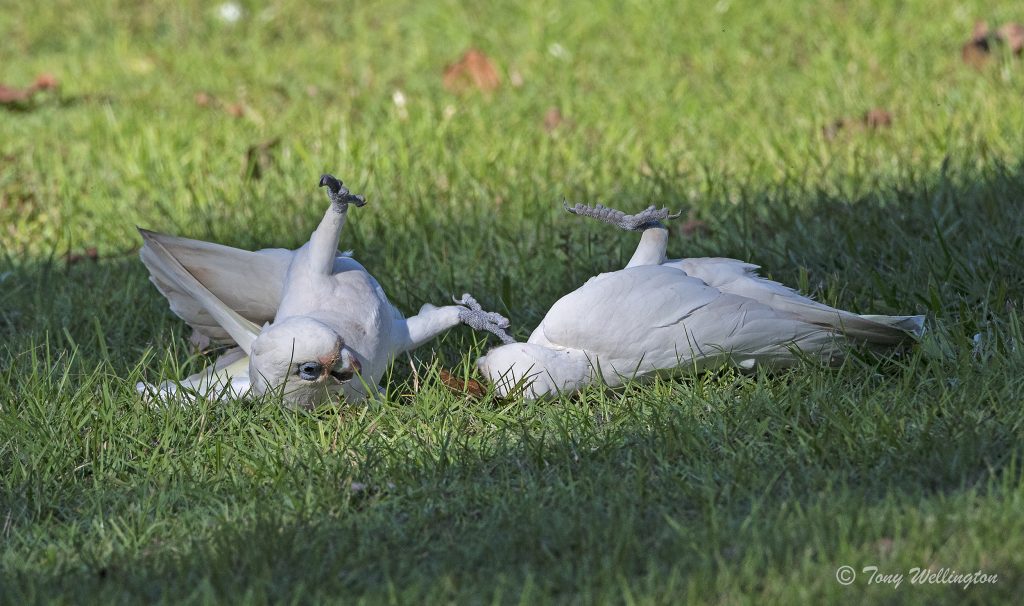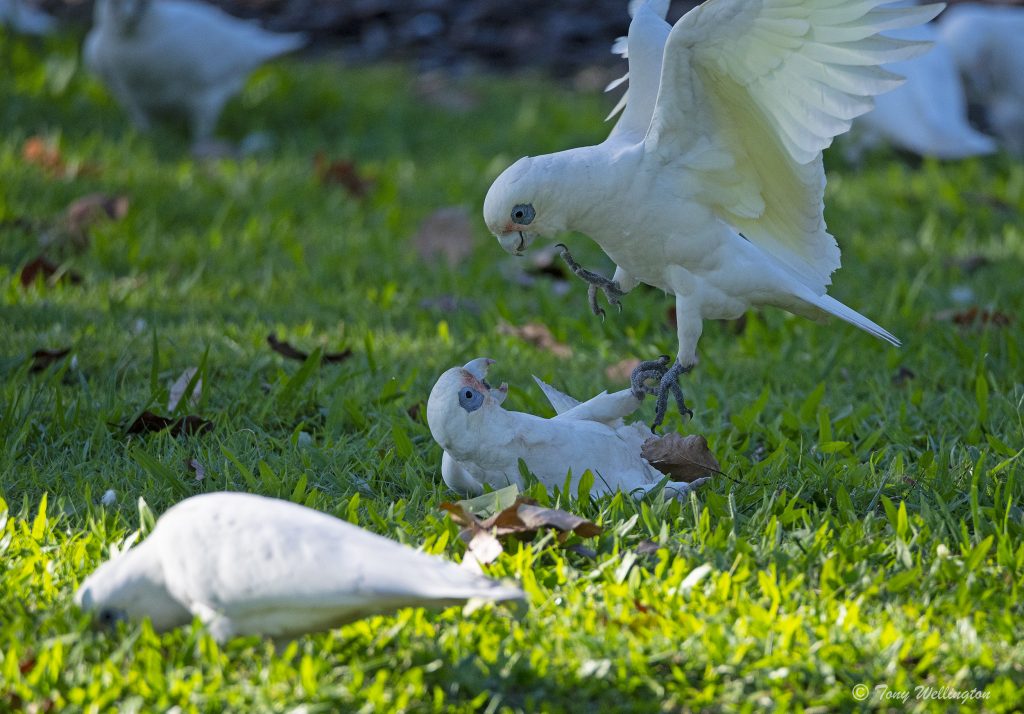We are lucky to have so many varieties of parrot on our doorstep: from large birds such as Sulphur-Crested, Yellow-tailed Black and threatened Glossy Black Cockatoos, to smaller versions like Rainbow and Scaly-breasted Lorikeets. In-between we have Galahs, Little Corellas, Pale-headed Rosellas and the bird with the Yuletide plumage and voice like a squeaky door, the King Parrot.
Parrots endear themselves to humans because they are curious, intelligent animals. Indeed, for the size of their brain, some species demonstrate remarkable capacities. Dr Irene Pepperberg famously taught an African Grey parrot named Alex to converse in human language. Whilst weathering the haughty indignation of her scientific peers, Dr Pepperberg eventually demonstrated that her parrot was equivalent in cerebral functioning to large-brained apes, with the intelligence of a five-year old human.
Alex recognised quantities up to six; comprehended the abstract notion of zero; distinguished colours, shapes and objects; understood the oblique concepts of bigger, smaller, same and different; and he commanded a vocabulary of around 150 words. What’s more, he could arrange those words into functioning and often complex sentences using effective syntax.
When he was fed up by the demands of his researchers, Alex would dictate his needs. In one such instance, when researchers were ignoring him and Alex wanted to return to his cage, he blurted out, “Pay Attention! Come here! Wanna go back.” As with many other parrot species, Alex also demonstrated a sense of humour and exhibited playfulness.
I have witnessed impish behaviour amongst our local Little Corellas. During their midday rest from feeding, flocks of Corellas gather to socialise. Sometimes they just rest in trees and preen one another, but at other times they frolic. Corella pairs mate for life, so the preening and play is frequently a bonding behaviour between “married” couples.
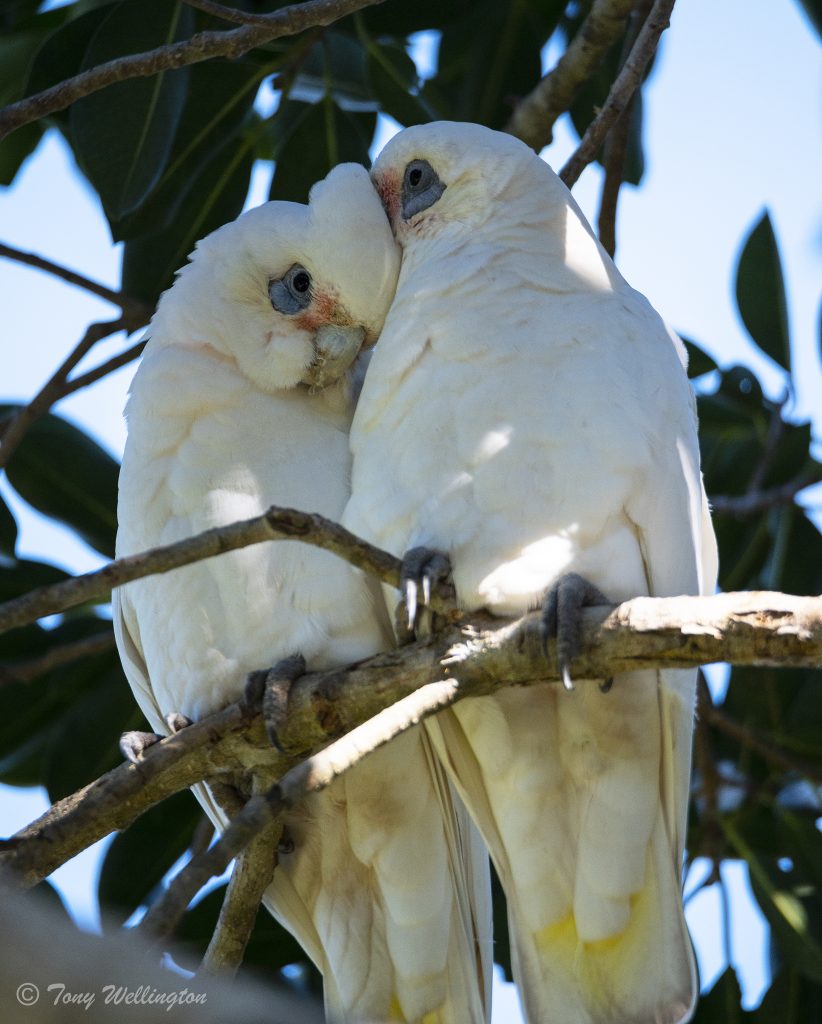
Pairs will often wrestle, tumbling across the ground like puppies or kittens. Sometimes they act like avian acrobats. It’s Rafferty’s Rules in these mock battles, where feet biting is all part of the fun.
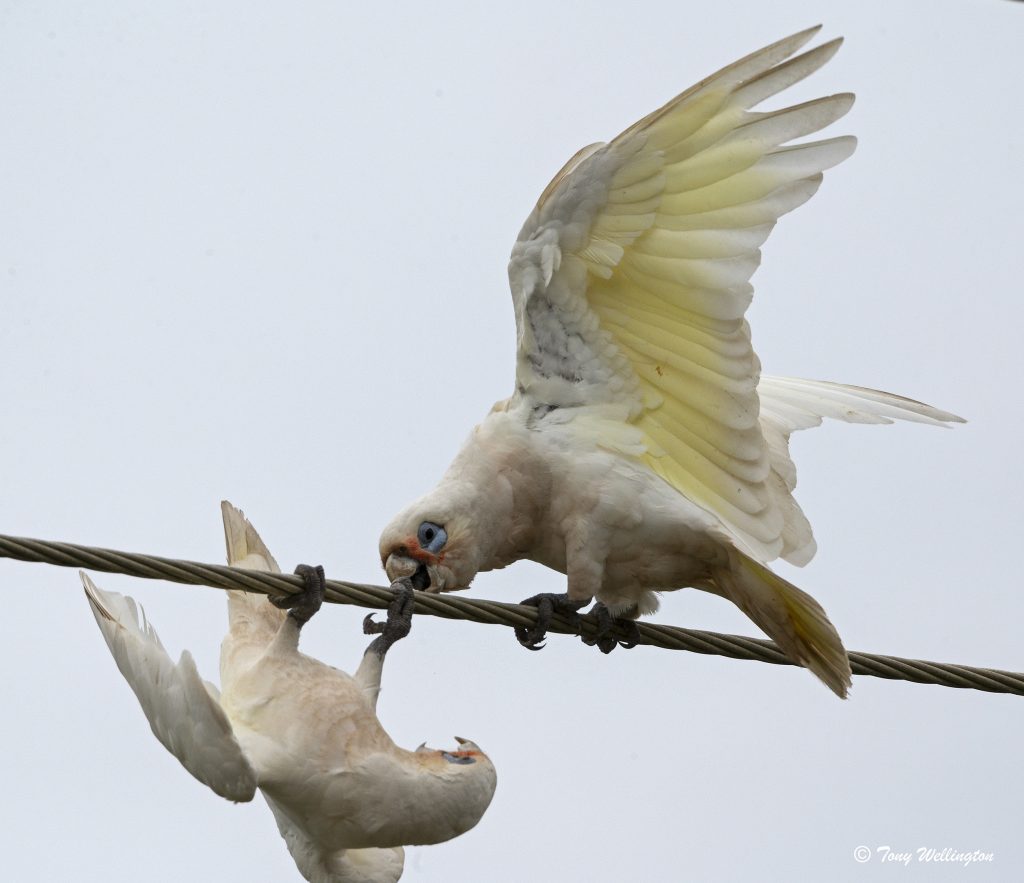
Where a bird doesn’t have a partner, and they can’t inveigle a playmate to join them, they can still play by themselves. I have watched individual birds swinging from wires and flag poles, and I include here a photo of a Corella that spent a happy half hour lying on its back toying with a stick.
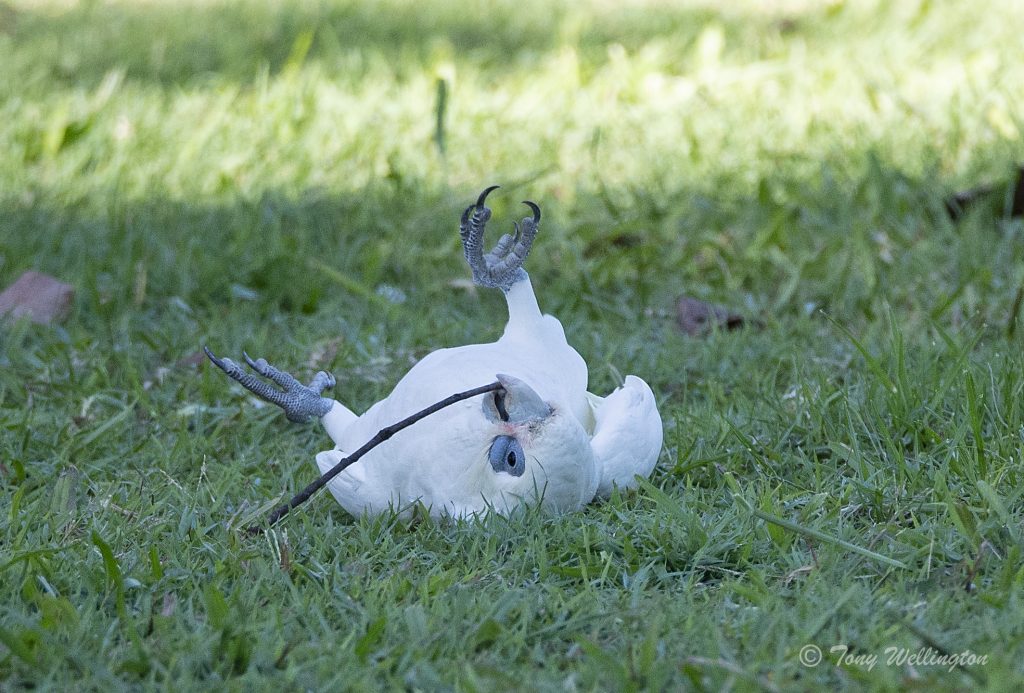
In rural areas, Corellas have been observed sliding down the steep roofs of wheat silos, just for the fun of it.
In theory, we only have one of the three species of Corella here in Noosa. Long-billed Corellas are supposed to occur only in the south of the continent, but I have photographed one hanging about with our local Little Corellas. Such feral birds may derive from escaped pets.
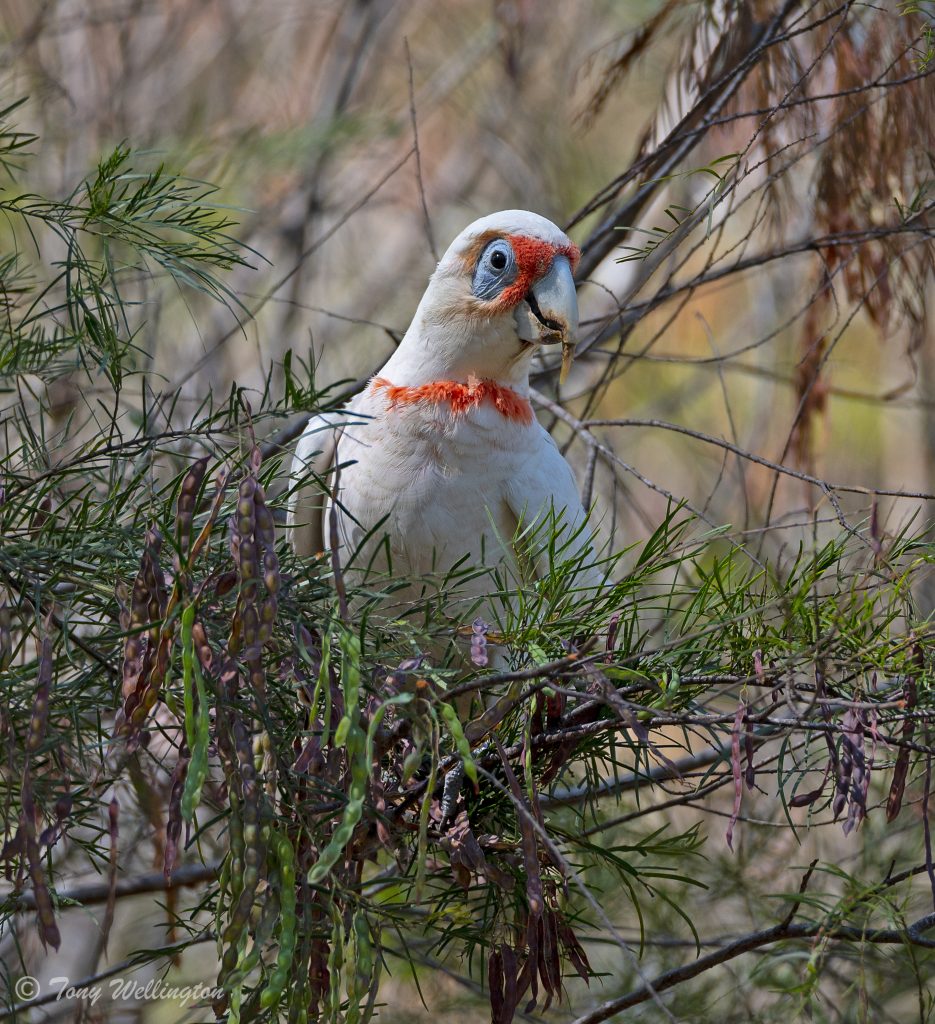
As with many other birds, including their parrot cousins, Corellas compete for tree hollows during breeding season. Diminishing numbers of old growth trees means fewer birds being able to procreate. Retaining trees, including dead ones, in parks, gardens and forests, is critical to the survival of so many species.
Parrots can teach us a good deal about humility. As Dr Pepperberg wrote in her book Alex & Me (Scribe, 2009), “The idea of human’s separateness from the rest of nature is no longer tenable. Alex taught us that we are a part of nature, not apart from nature. The separateness notion was a dangerous illusion that gave us permission to exploit every aspect of the natural world … we are now facing those consequences.”
